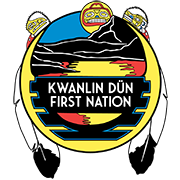New research on an ancient dart found in C/TFN and KDFN Traditional Territory shows Yukon First Nation ancestors understood how to use what they found in nature to survive and thrive
A new study has found beaver castoreum was used in the design and construction of a 6,000-year-old Yukon atlatl throwing dart. The castoreum–an orange sticky substance–was coating the sinews and wood where different parts of the artifact were attached together.
Castoreum is a secretion beavers use to scent-mark their territory. This is the first time it has been found on an ancient hunting tool. Other studies of Yukon ice patch artifacts found a mix of spruce resin, red ochre, and animal fats used in the same way.
This discovery shows that First Nations ancestors were connected to the land, the water, and the animals in our Traditional Territories. They understood how to use the things around them to design complex and ingenious tools.
Quick facts
- The Yukon Ice Patch Research Project is a collaborative initiative between the Carcross/Tagish First Nation, Champagne and Aishihik First Nations, Kluane First Nation, Kwanlin Dün First Nation, Ta’an Kwäch’än Council, Teslin Tlingit Council and the Government of Yukon.
- Castoreum is a secretion produced in the castor sacs of beavers and is used to mark their territory. Comparative modern castoreum samples were provided by Peter Knamiller of Yukon Department of Environment.
- The site where this artifact was found is on Canada’s Tentative List of sites to be nominated as a UNESCO World Heritage Site.
- Throwing darts, which were thrown using a lever-like handle, were the preferred hunting projectile used by First Nations people in Yukon before prior to 7th century AD. They were locally replaced as a hunting weapon by bows and arrows around 847 AD.
You can see the full Canadian Conservation Institute study here: https://www.sciencedirect.com/science/article/pii/S2352409X21001619
PHOTO CAPTIONS: This ancient throwing dart is two-metres long. It was found melting free from an alpine ice patch in fall 2018.
Photos courtesy of the Yukon government
